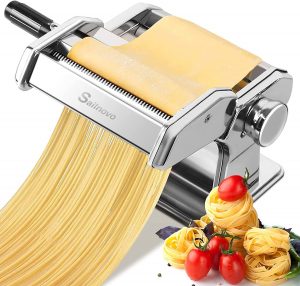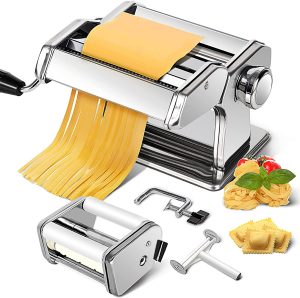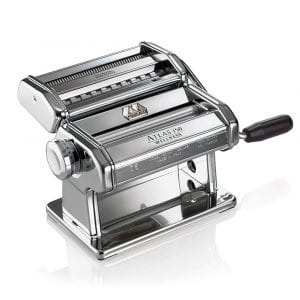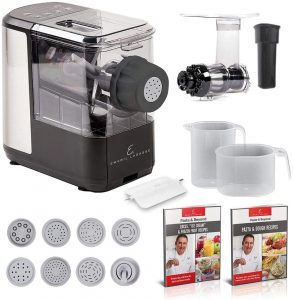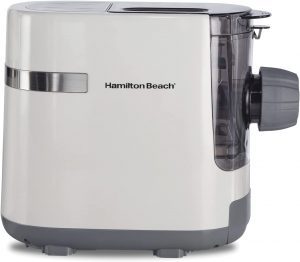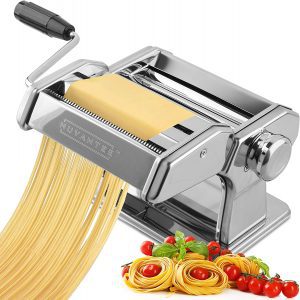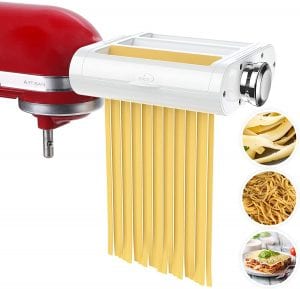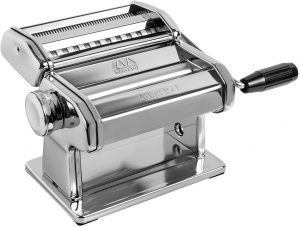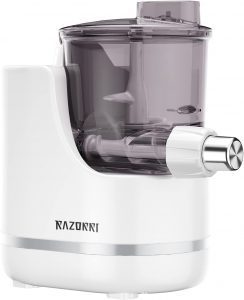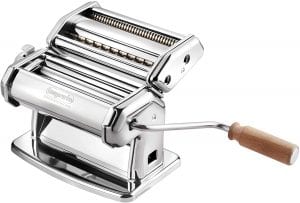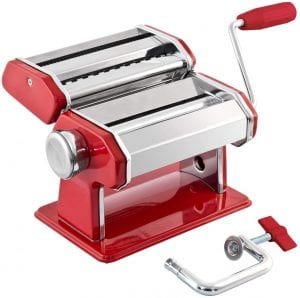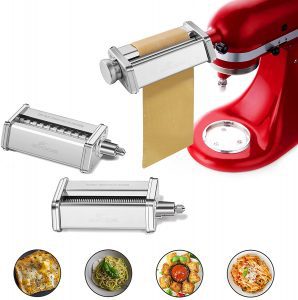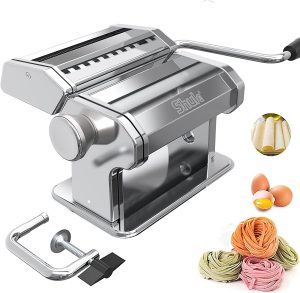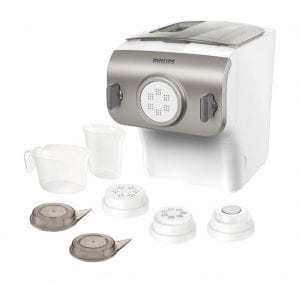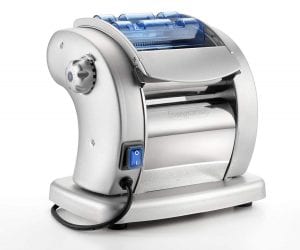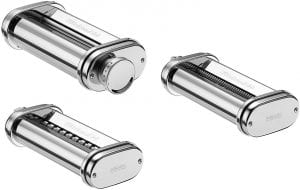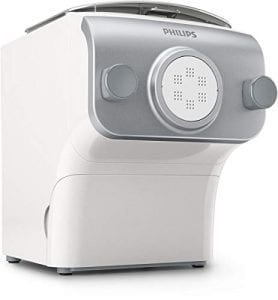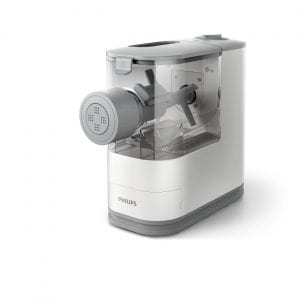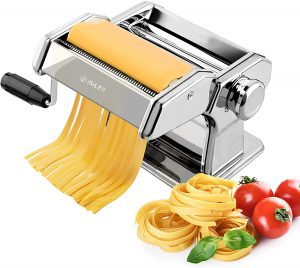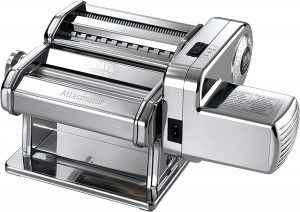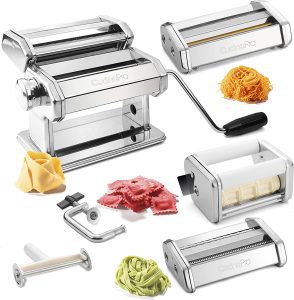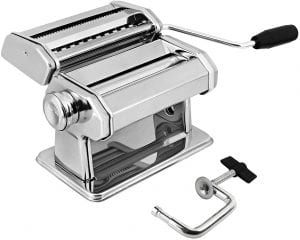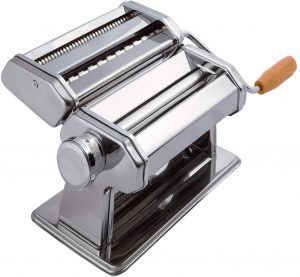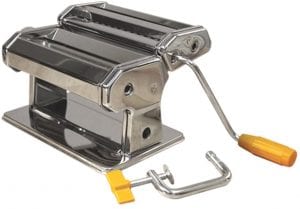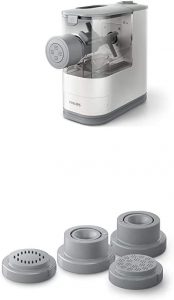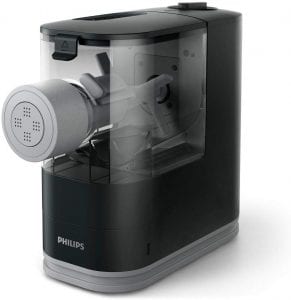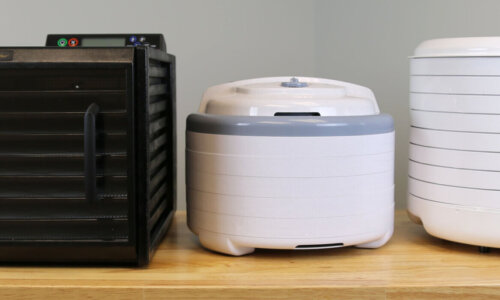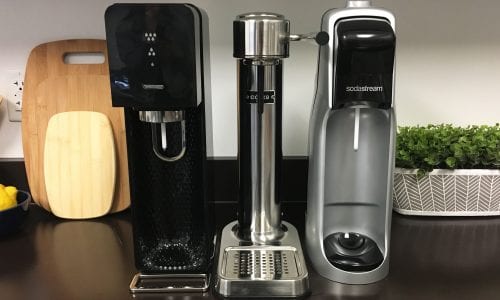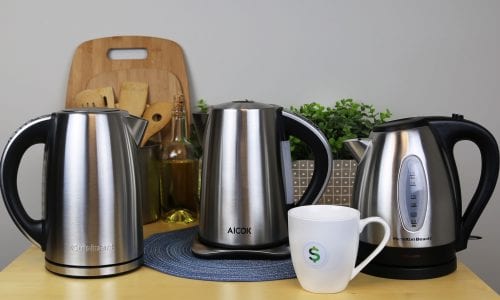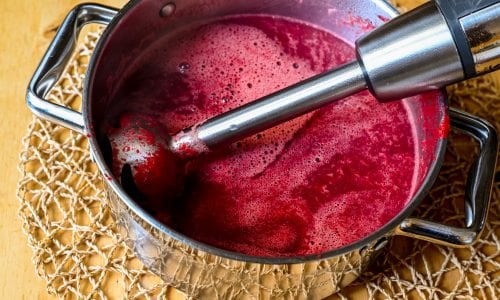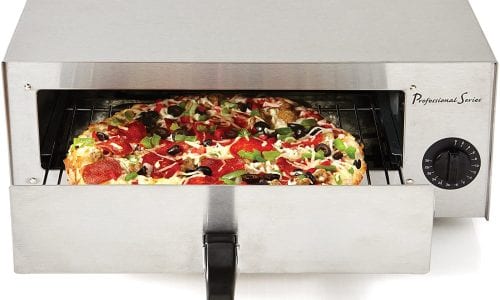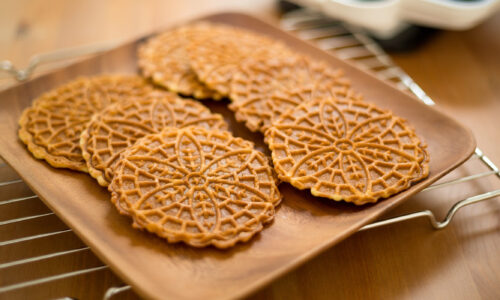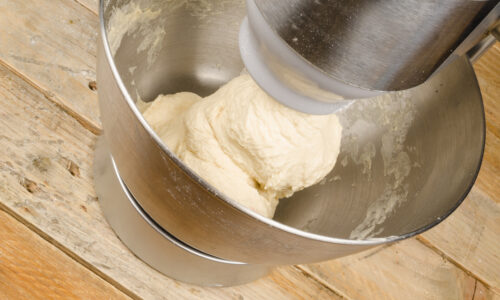The Best Pasta Maker
We looked at the top 26 Pasta Makers and dug through the reviews from 107 of the most popular review sites including and more. The result is a ranking of the best Pasta Makers.
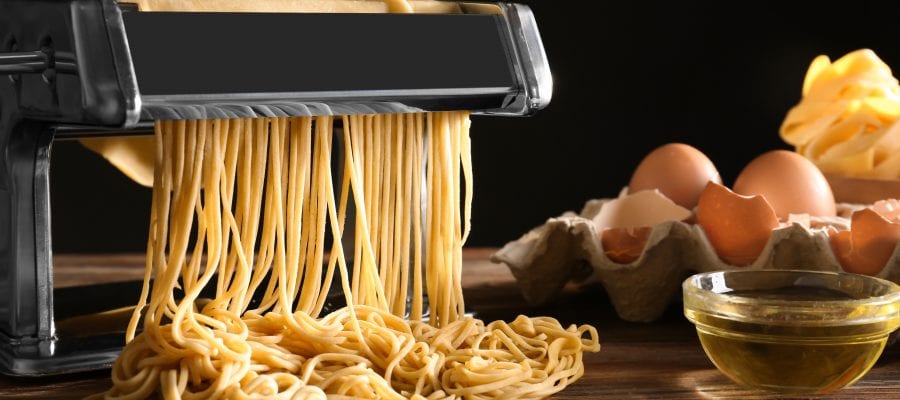
Our Review Process
Don't Waste Your Money is focused on helping you make the best purchasing decision. Our team of experts spends hundreds of hours analyzing, testing, and researching products so you don't have to. Learn more.
Our Picks For The Top Pasta Makers
- 1. Sailnovo Stainless Steel Food-Grade Pasta Maker
- 2. CHEFLY Adjustable User-Friendly Pasta Maker
- 3. Marcato Atlas 150 Home Italian Pasta Maker
- 4. Emeril Everyday Space Saving Customizable Electric Pasta Maker
- 5. Hamilton Beach No-Drying Internal Scale Pasta Maker
- 6. Nuvantee Adjustable Stainless Steel Manual Pasta Maker
- 7. ANTREE Stainless Steel Manual Pasta Maker
- 8. Marcato Design Atlas 150 Italian Pasta Maker
- 9. Razorri Ultra-Fast Dishwasher Safe Pasta Maker
- 10. Imperia 150 Traditional Easy Pasta Maker
- 11. GOURMEX Compact Double Cutter Pasta Maker
- 12. GVODE Professional Multifunctional Pasta Maker
- 13. Shule Non-Slip Handle Wipe-Clean Pasta Maker
- 14. Philips HR2357/0 Fresh Personalize Pasta Maker
- 15. CucinaPro Imperia Built-In Motor Pasta Maker
- 16. KitchenAid KPRA Multipurpose Pasta Maker
- 17. Philips Kitchen Appliances Automatic Customizable Pasta Maker
- 18. Philips Kitchen Appliances HR2370/05 Kneading Stirring Pasta Maker
- 19. iSiLER 150 Food-Grade Easy Clean Pasta Maker
- 20. Marcato Atlas 150 Homemade Electric Pasta Maker
- 21. CucinaPro Deluxe Countertop Pasta Maker
- 22. GOURMEX Easy-Grip Handle Pasta Maker
- 23. OxGord Easy-Click Dial Detachable Blades Pasta Maker
- 24. Weston Double Cutting Head C-Clamp Pasta Maker
- 25. Philips Kitchen Appliances Healthy Hassle-Free Pasta Maker
- 26. Philips Viva Collection Easy-Store Pasta Maker
Made using a food-grade stainless steel, this pasta maker truly shines. It adjusts to one of seven different thicknesses, allowing users to make everything from angel hair pasta to lasagna. Thank crank is easy to operate and the built-in cutter gives you control over the length of your pasta.
Budget-Friendly PickYou don't need to spend a fortune to make delicious fresh pasta, thanks to this affordably priced pasta maker.
Whether you're looking to make traditional spaghetti or meat-filled raviolis, this pasta maker has you covered. It offers nine different thickness settings and three alternative blades. The machine comes with a retainer clip, so you can quickly and easily anchor it to your countertop or kitchen table.
Heavy-Duty MachineSince this pasta maker weighs just 7 pounds, it's easy to maneuver and operate.
This pasta maker rolls and cuts pasta dough with its chrome-plated steel device. It comes with the pasta machine, pasta cutter, hand crank, clamp and instructions. It can be cleaned with a dry brush or cloth.
Luxury PickThis pasta maker is perfect for making lasagna, fettuccine, and tagliatelle at home.
There isn't anything you can't do with this pasta maker. It features eight pasta-shaping discs to make everything from penne to fettuccini and also doubles as a juicer. Thanks to the two included recipe guides, you'll never run out of new ideas.
Multiple Accessories IncludedIf space is an issue in your home, you'll love this compact pasta maker, as it won't take up much room on your counter.
Buying Guide
Is there anything more satisfying than tucking into a big bowl of pasta after a long, hard day? The al dente noodles, the cheesy topping, the flavorful sauces . . . we could go on. And when you’ve made the pasta yourself with an electric pasta maker, there is an added element of satisfaction.
One of the best things about making your own pasta is being able to experiment in the kitchen. You can create intriguing flavors using ingredients like spinach or tomatoes in the pasta dough. You can take it up a notch by adding in spices to the pasta dough or creating new and fun shapes.
Fresh pasta usually cooks much faster than dry pasta from a box. If you’ve made some pasta on the weekend and stored it in the fridge, you can have a homemade meal in no time after work. Fresh pasta also absorbs sauces better than dry pasta, so you get a mouthful of flavor in every bite.
There are two main types of pasta makers: manual and electric. A manual pasta maker, as the name suggests, requires you to roll the pasta through the machine by turning a handle manually. Once the dough is rolled, you can cut it into shapes using a sharp knife. It requires a bit of muscle and time and is perfect for long pasta shapes such as fettuccini and spaghetti.
On the other hand, an electric pasta maker is faster and easier to use. With this kind of appliance, you make the dough and feed it into the machine – and it does the rest. One of the biggest benefits of an electric pasta maker is that it can make a wide variety of pasta shapes. In addition to long pasta shapes, you can also get short ones such as macaroni or ziti. Keep in mind that manual pasta makers are on the lower end of the price spectrum, while electric pasta makers are on the higher end.
Before you invest in an electric pasta maker, there are a few features to look for, says culinary expert Julie Chernoff.
“High-quality materials — stainless-steel parts, metal gears (rather than plastic) — are a must for durability,” she says. “Ease of cleaning is also essential. Are the parts dishwasher safe?”
You’ll also want to look at whether the speed and thickness settings are adjustable and whether the paste maker has a safety cover, Chernoff says. Also consider how easy the machine will be to set up in your kitchen, as well as how much noise it makes when in use.
Also consider exactly which types of pasta you plan to make.
“There are two types of pasta makers: extruders (for pasta shapes, such as macaroni, penne, fusilli, etc.) and rollers (for lasagna sheets, spaghetti, linguini, etc.). Some electric pasta makers do both,” Chernoff advises.
Our Expert Consultant

Culinary Expert
Julie Chernoff is a long-time member of Les Dames d’Escoffier (past president of the Chicago Chapter, and current co-chair of the LDEI Legacy Awards Committee), the Association of Food Journalists (AFJ) and the International Association of Culinary Professionals.
Chernoff is the dining editor of Better, a lifestyle website and print magazine. Her journalism started in the test kitchens of Weight Watchers Magazine. She holds a BA in English from Yale University and is a graduate of the California Culinary Academy. She has spent the last few decades styling, photographing, teaching, developing recipes, editing, thinking and writing about food.
Why we recommend these pasta makers?
Products Considered
Products Analyzed
Expert Reviews Included
User Opinions Analyzed
Our experts reviewed the top 26 Pasta Makers and also dug through the reviews from 107 of the most popular review sites including and more. The result is a ranking of the best of the best Pasta Makers.
DWYM is your trusted roduct review source. Our team reviews thousands of product reviews from the trusted top experts and combines them into one easy-to-understand score. Learn more.
What to Look For
- One of the most important elements to consider when looking for an electric pasta maker is how easy it is to use. If your appliance is complicated, it’s unlikely you’ll be excited to make your own pasta. However, if it’s simple to use, you will be more inclined to try out new pasta recipes. Consider whether you want the machine to mix the pasta dough for you or if you want to do that step by hand. Many pasta makers can be attached to standard mixers so you can use your appliance to mix the dough and then use the pasta roller and cutter to get the shape you want.
- If you’re a true pasta fan, you know the shape of the pasta is critically important. It affects both the texture and taste of the dish. Some pasta shapes are better for meaty and hearty sauces, while others work better with more delicate ones. Be sure to check which kind of shapes your electric pasta maker can create. Some models roll out traditional lasagna, fettuccine, ravioli and angel hair, so they are perfect for those who like long pasta or the popular casserole dish. The Marcato Design Atlas 150 Italian Pasta Maker can create beautiful and uniform strands of spaghetti and fettuccini, in addition to lasagna. Other models, on the other hand, are designed to make tagliatelle and fettuccine.
- One of the main reasons home cooks choose to get an electric pasta maker, as opposed to a manual one, is because they want to save time. Manual pasta makers require more time to roll out the dough, whereas the electric-powered ones can do the task much quicker, in addition to slicing out the individual noodles. Be sure to check the time-saving claims to ensure you’re getting a pasta maker that will give you back some hours in your day. For example, some pasta machines have two speed settings to significantly cut your prep time.
- Pasta makers have several nooks and crannies where dough and flour can hide, so cleaning them is no easy task. Plus, if you don’t get them perfectly clean after use, you could risk bacteria growth in your machine. When searching for an electric pasta maker, be sure to find one that is easy to take apart and clean. If some parts can go in the dishwasher, that’s a huge bonus that saves you time and headache. There are models that can be easily wiped clean with a cloth. Other models come with a cleaning brush to help you remove any leftover dough or flour from inside the machine.
More to Explore
While pasta has been made by hand for centuries, the pasta machine is a fairly new invention by comparison. When Thomas Jefferson toured Italy in 1787, he became enamored with the dish and commissioned his secretary William Short to purchase a pasta machine. This machine made macaroni but was not as durable as Jefferson expected. When he came home to the United States, his cooks ended up making macaroni by hand by rolling the dough and cutting it into shapes.
In 1833, King Ferdinand commissioned Cesare Spadaccini to produce a pasta machine that could be mass-produced. The King had witnessed poor townspeople kneading pasta dough with their feet and he did not like the process. Spadaccini’s machine was a water-wheel powered appliance with bronzed metal legs that kneaded the dough. While this pasta maker was still a manual one that required a considerable amount of time and effort, it sped up the pasta-making process and enabled cooks to make more pasta at one time.

